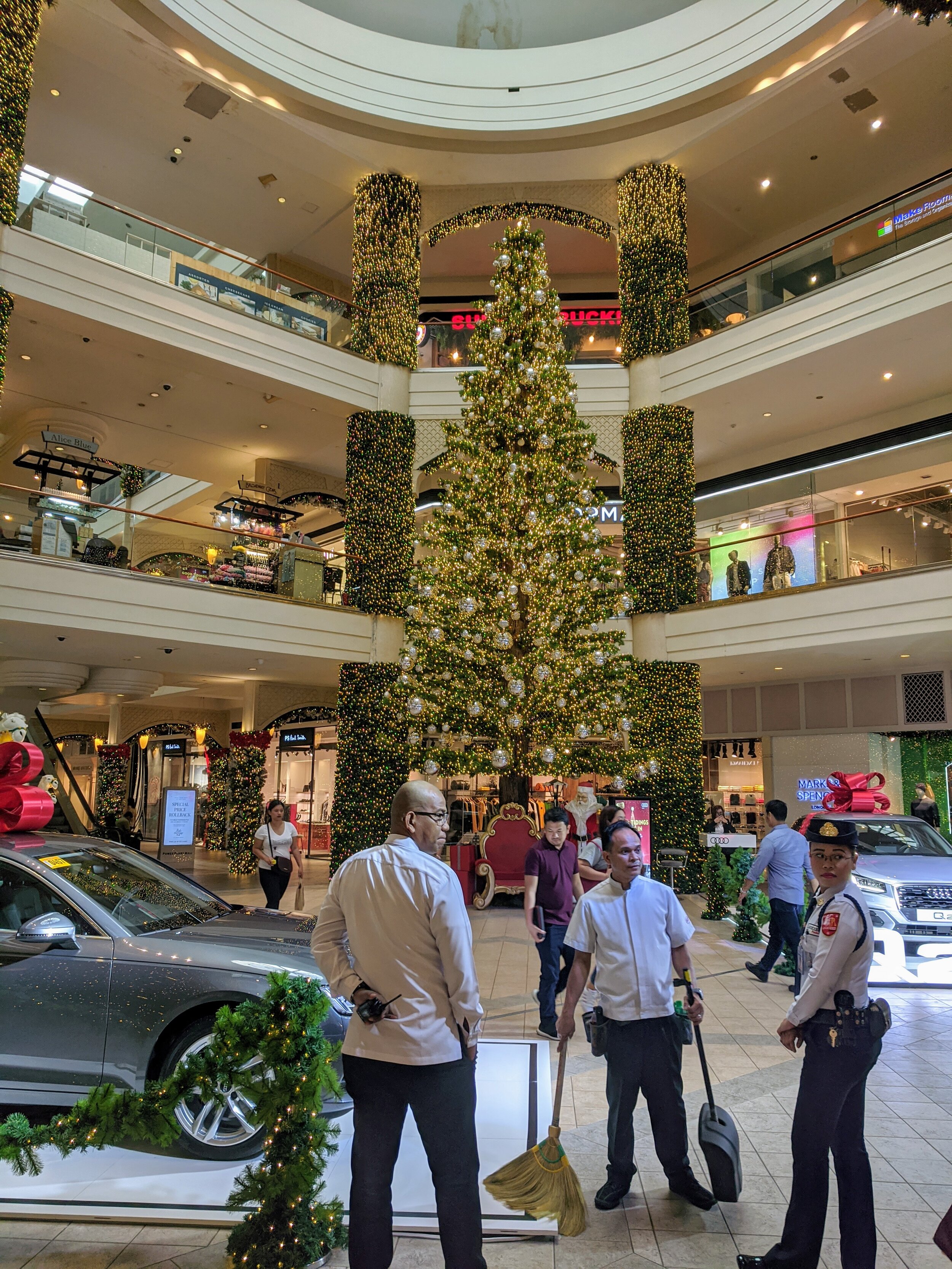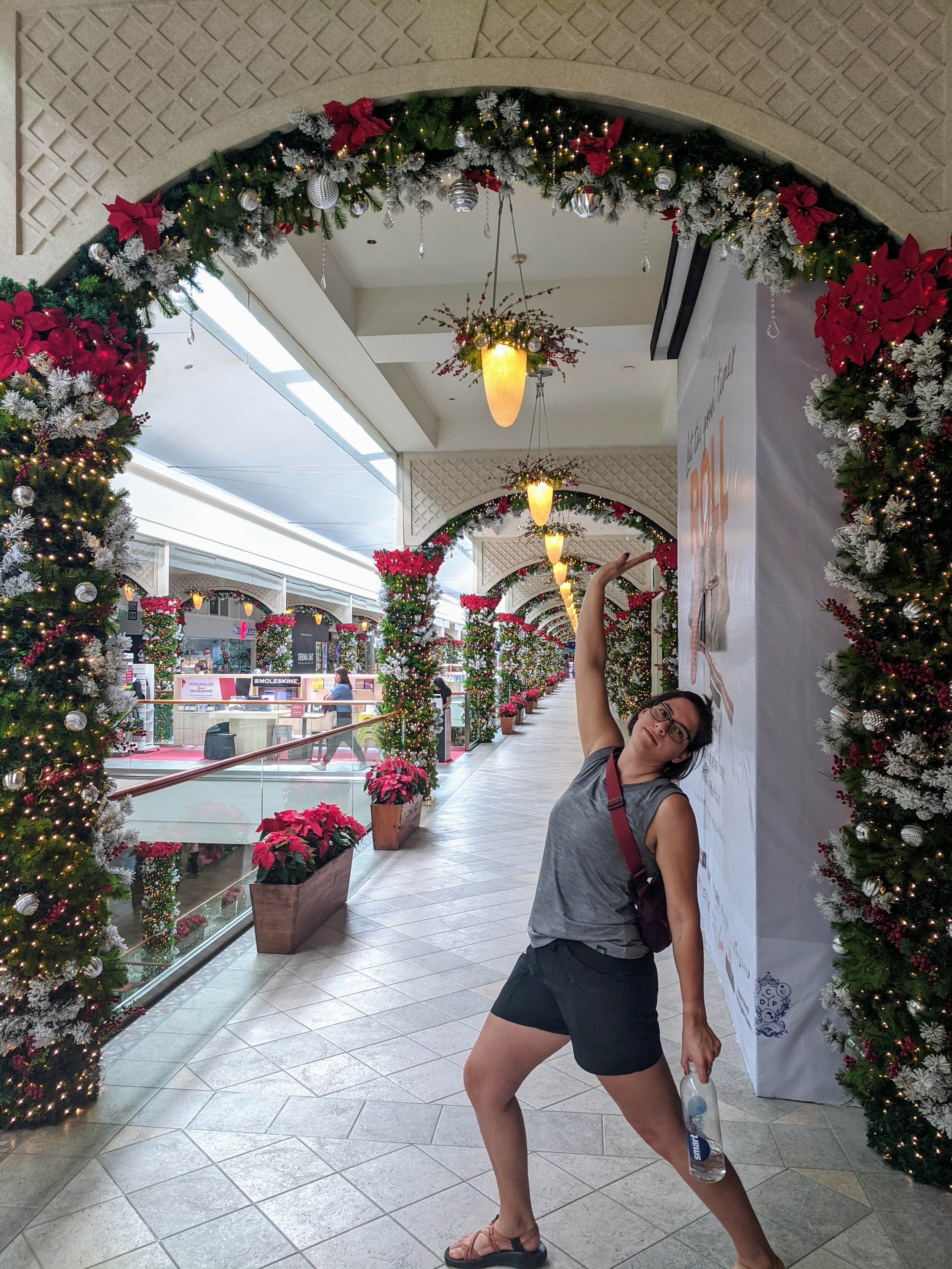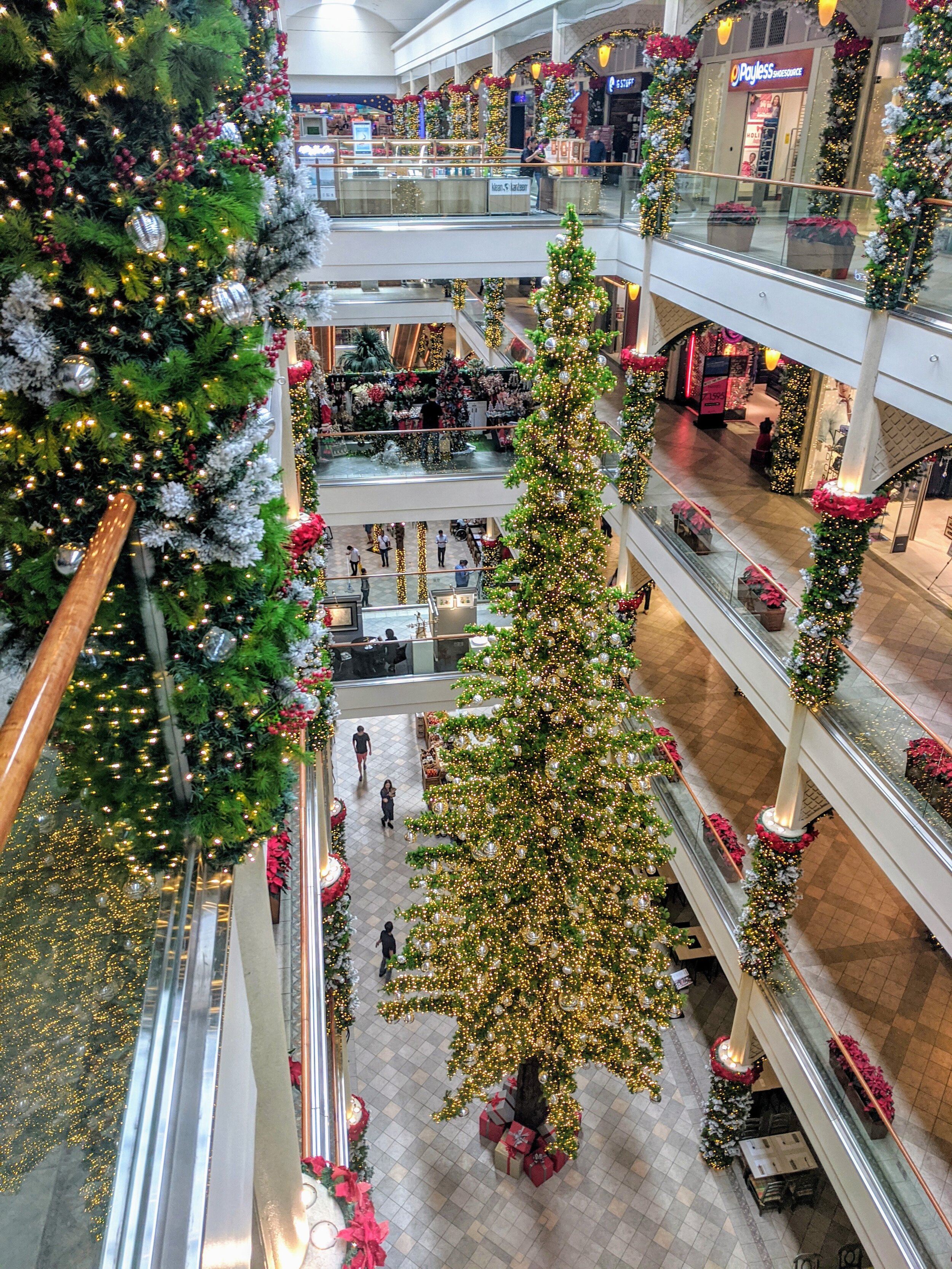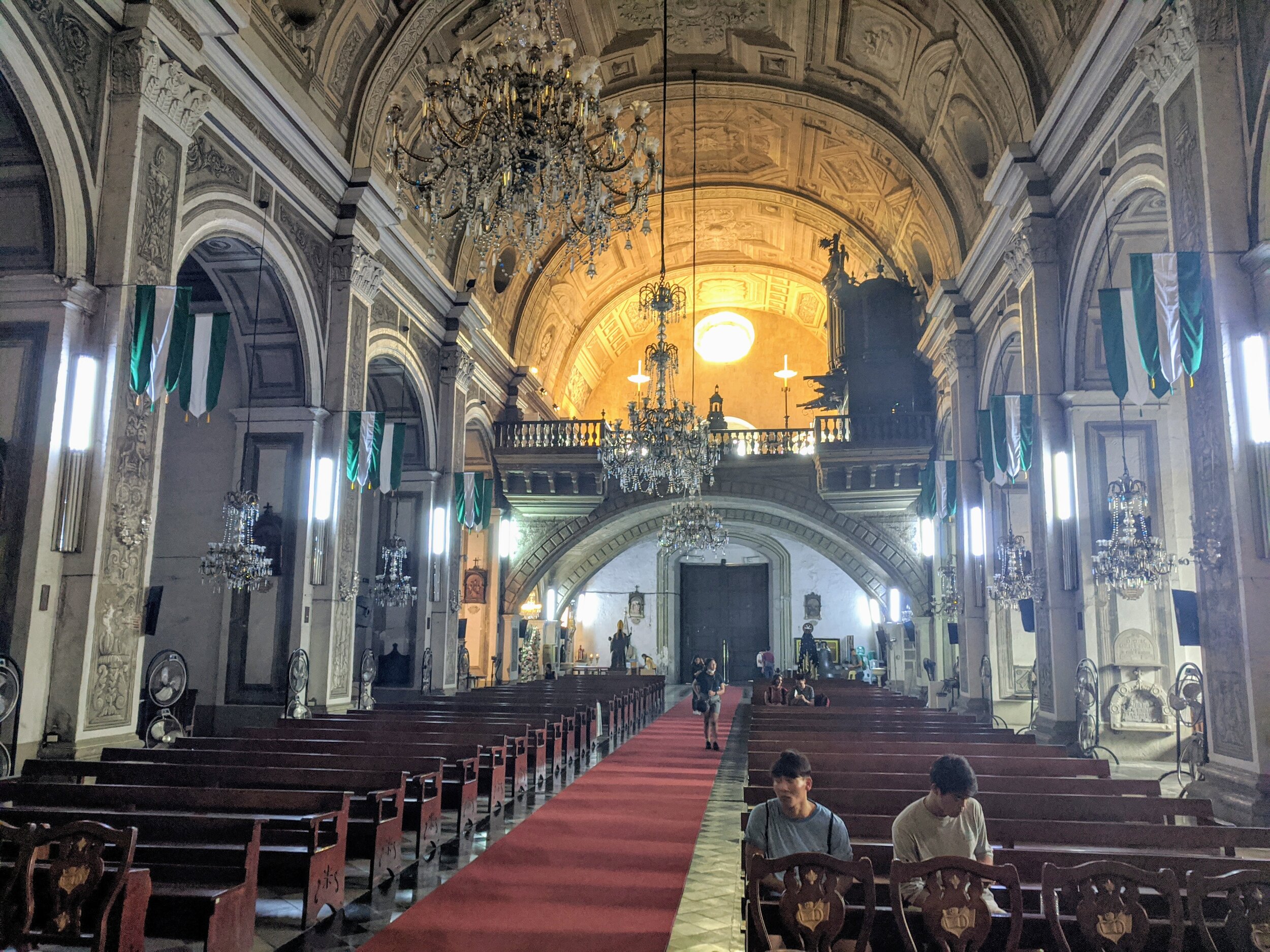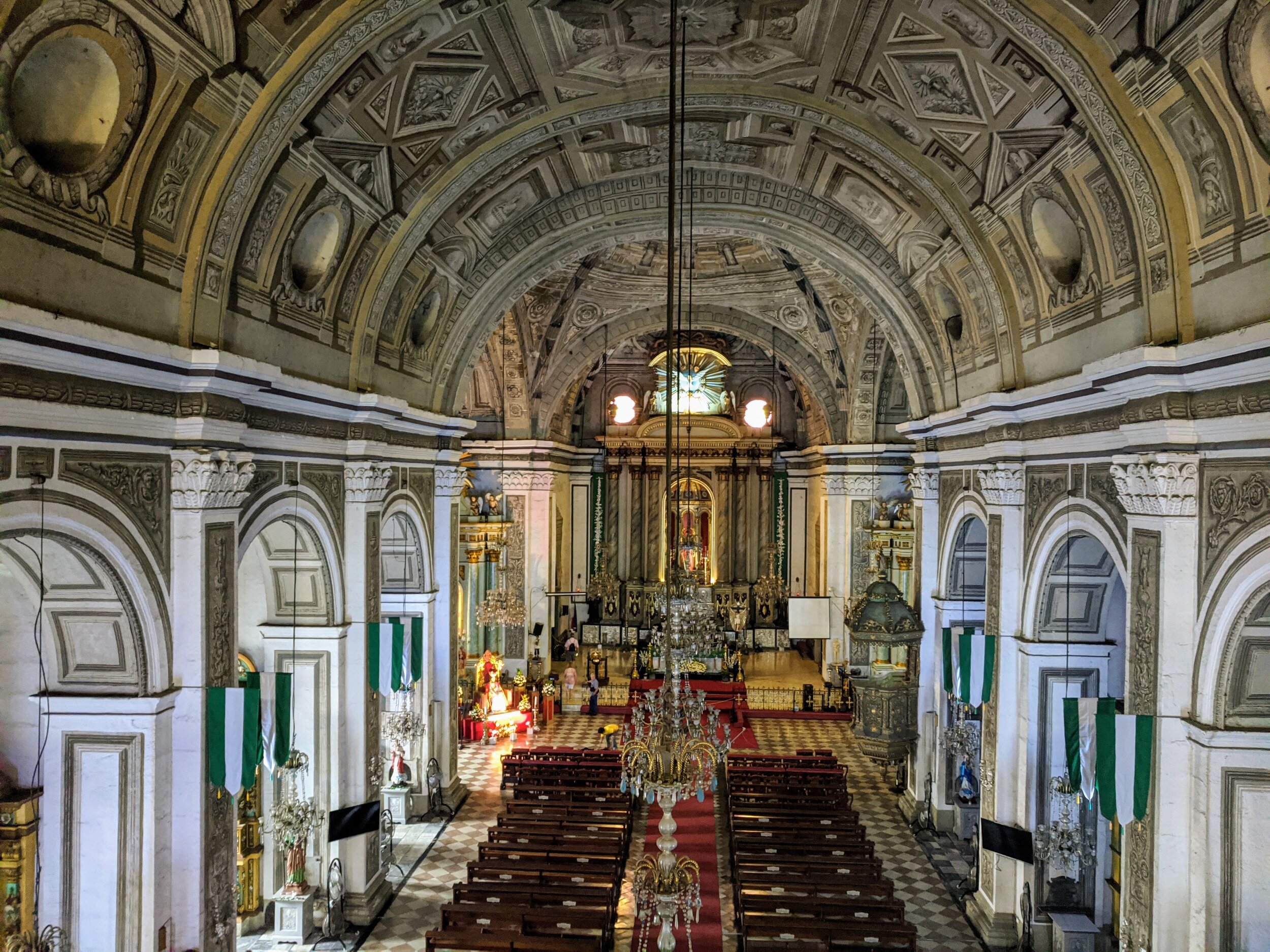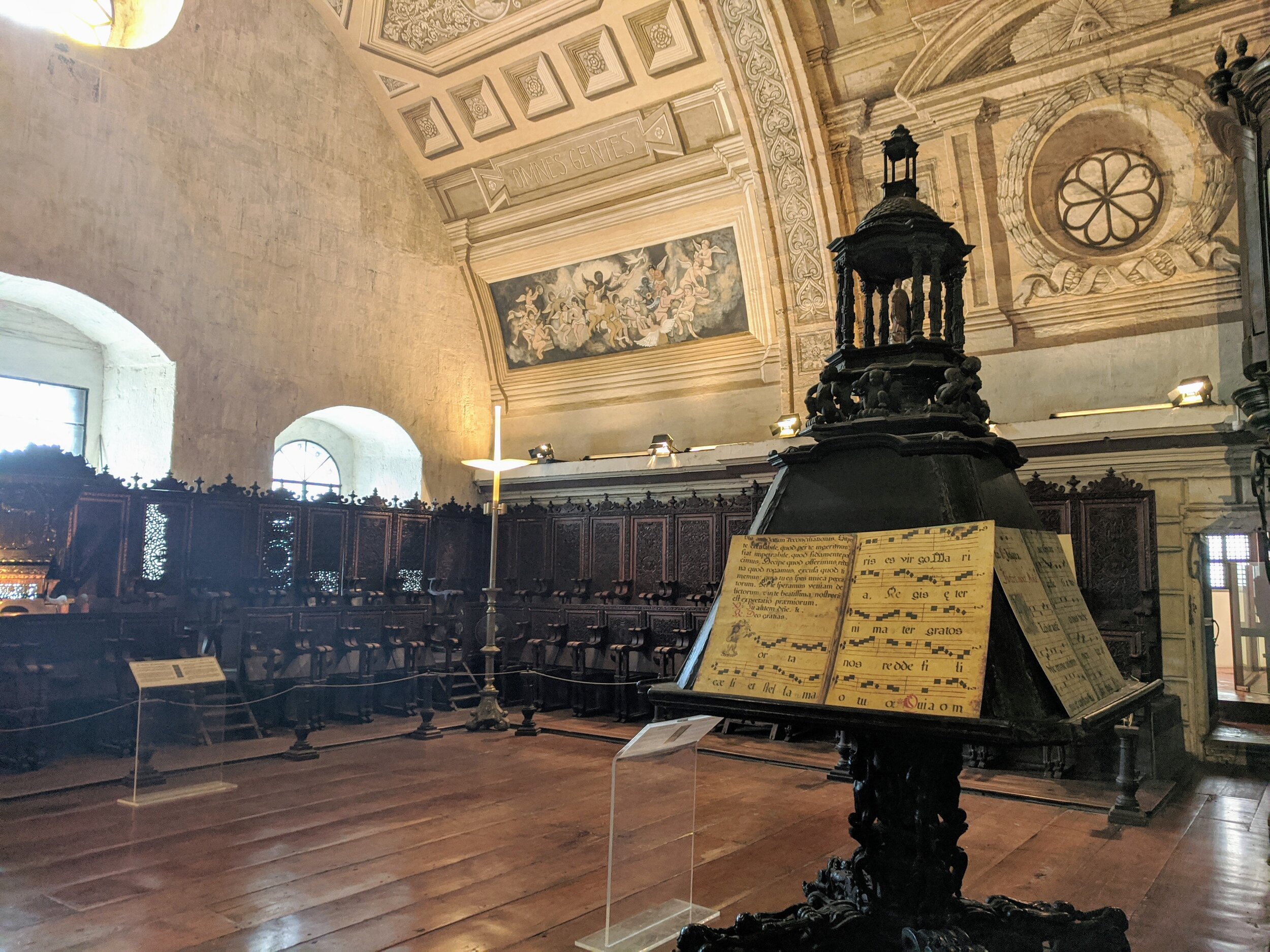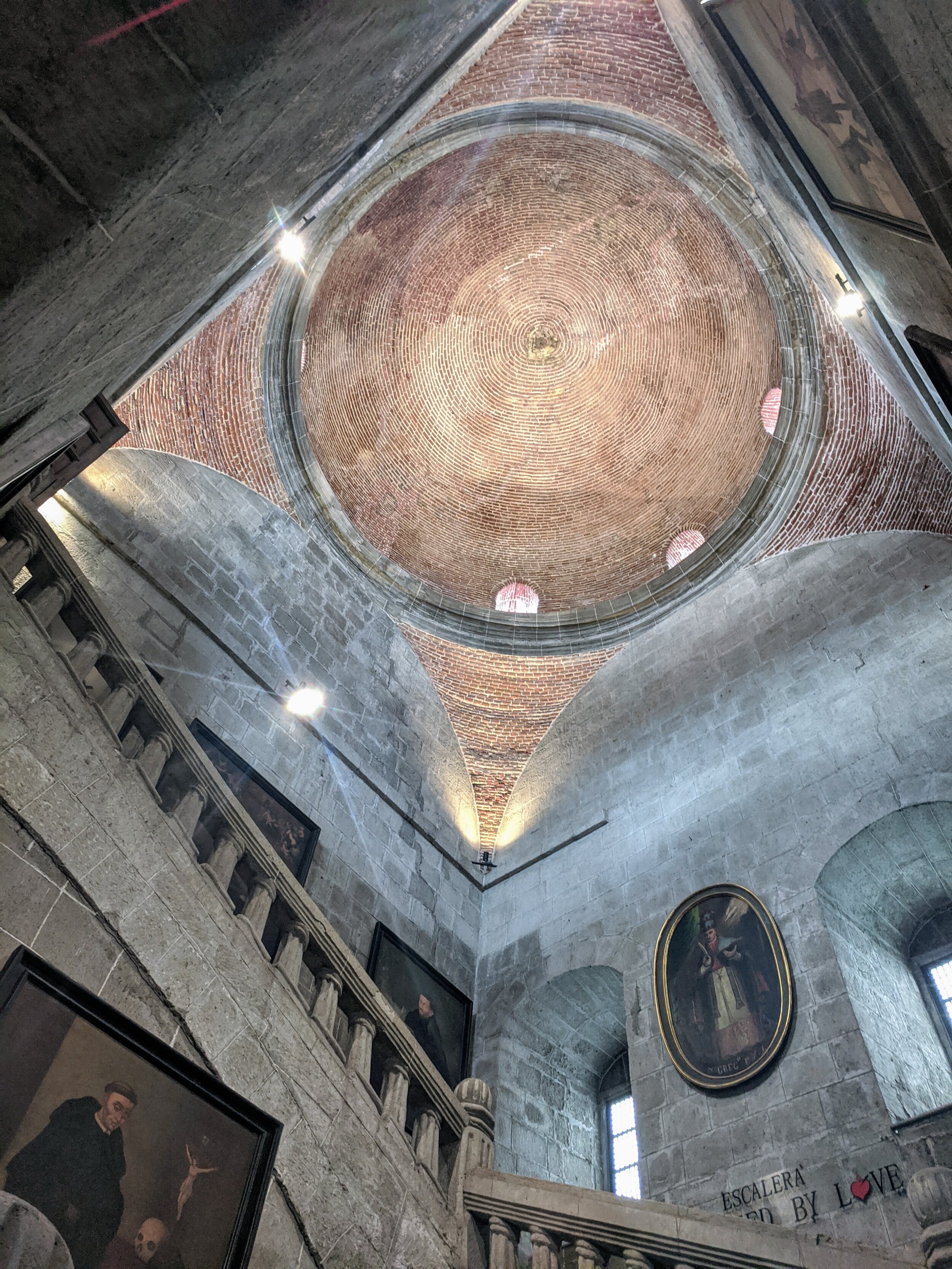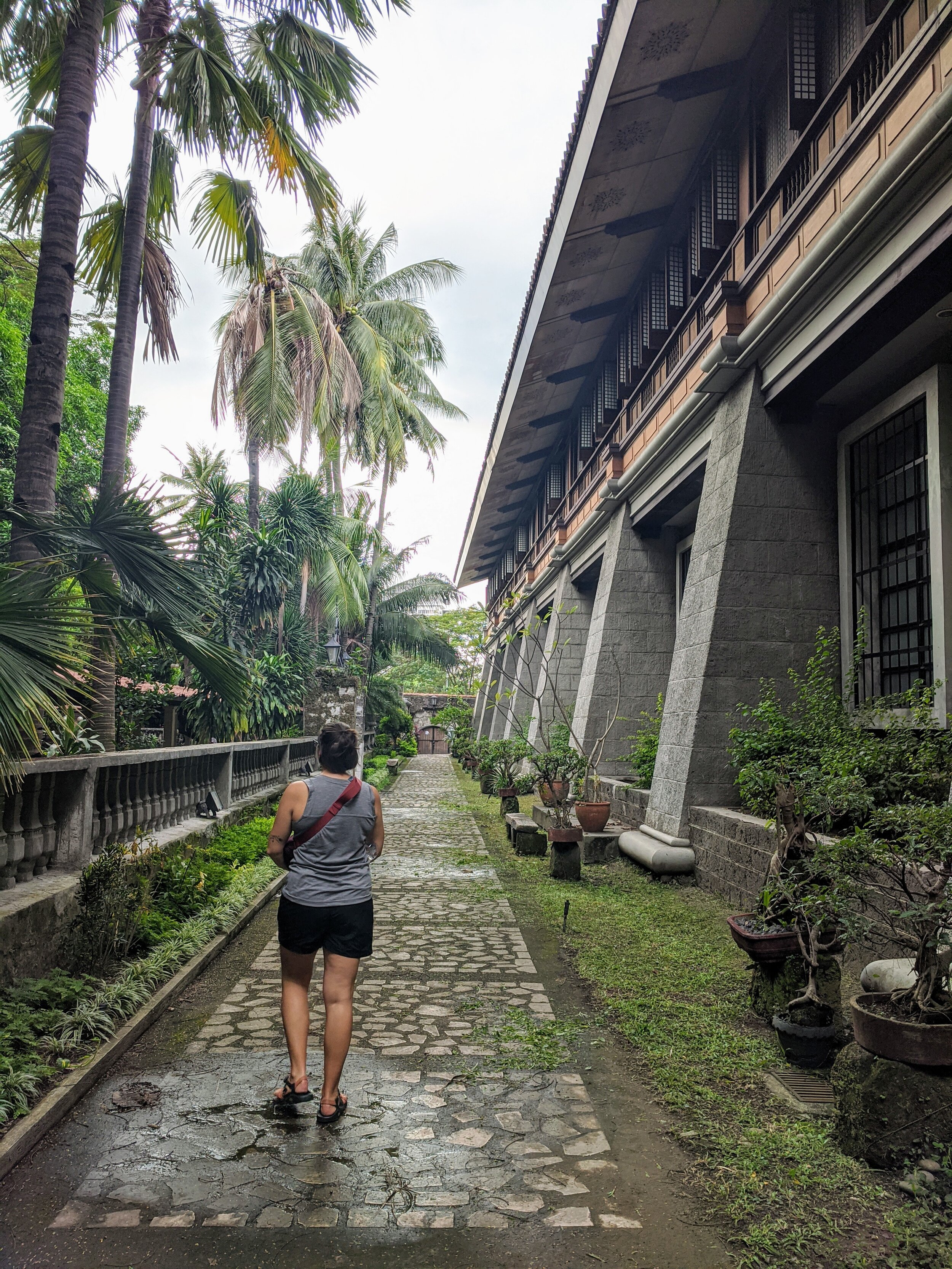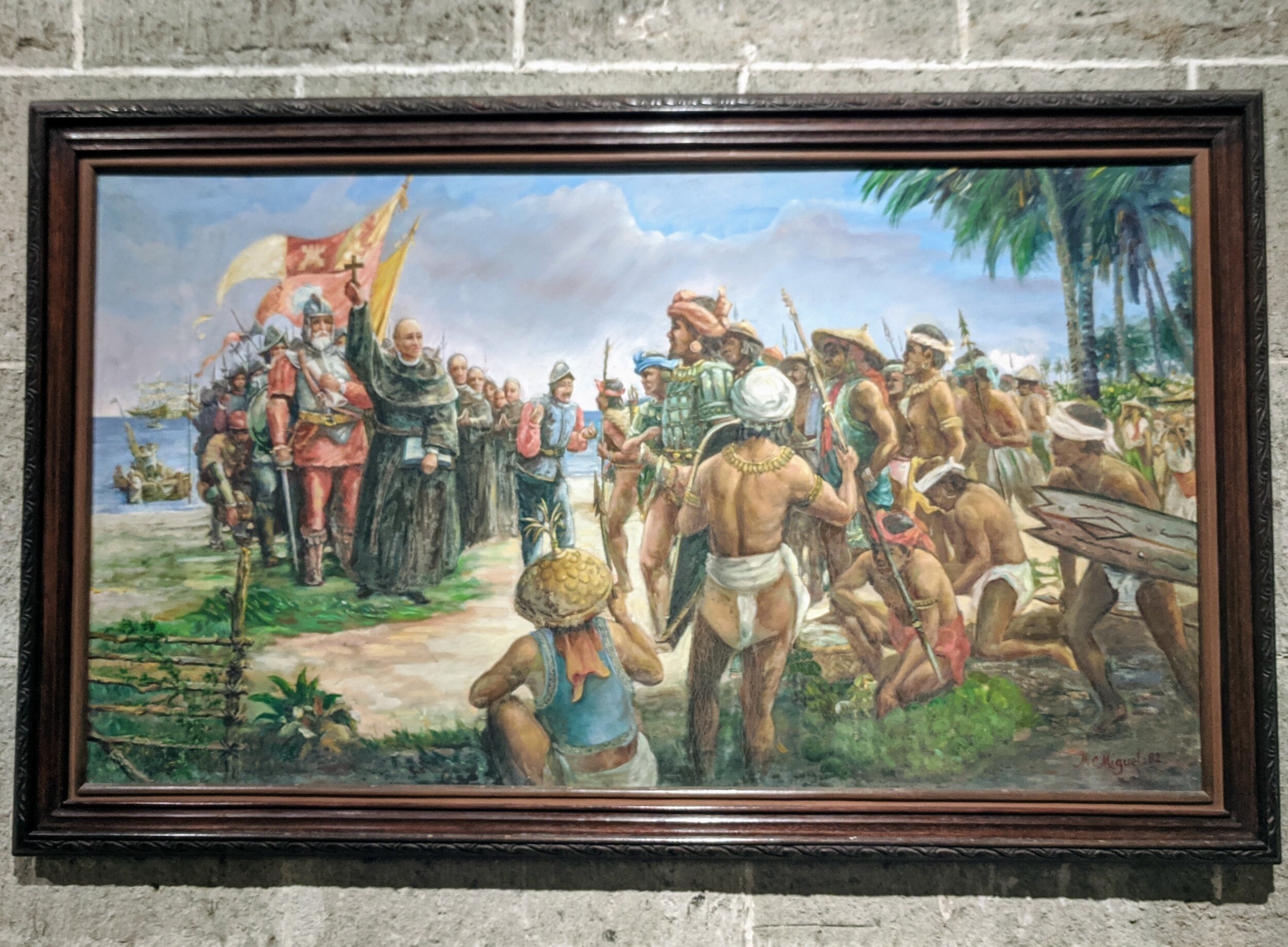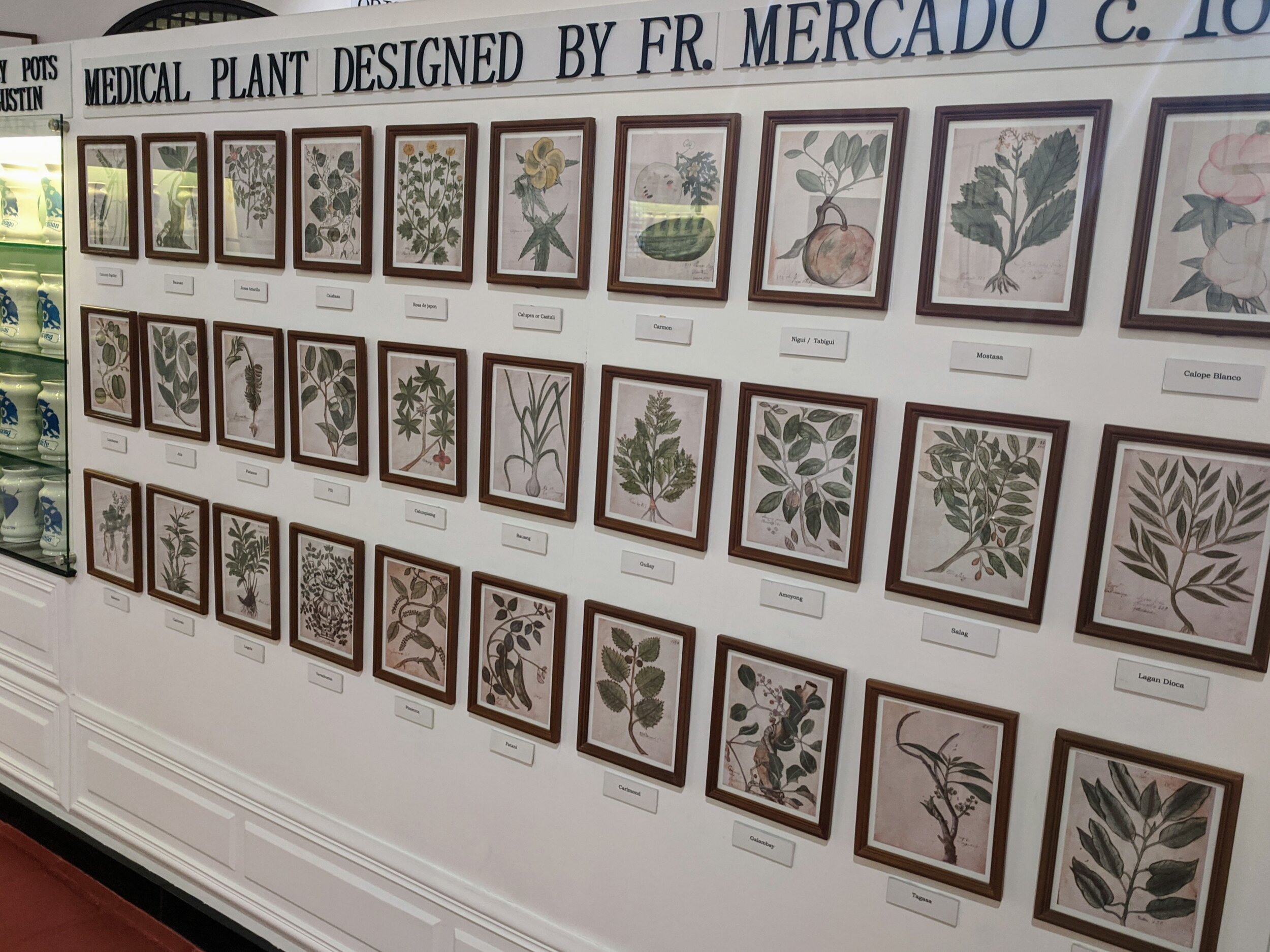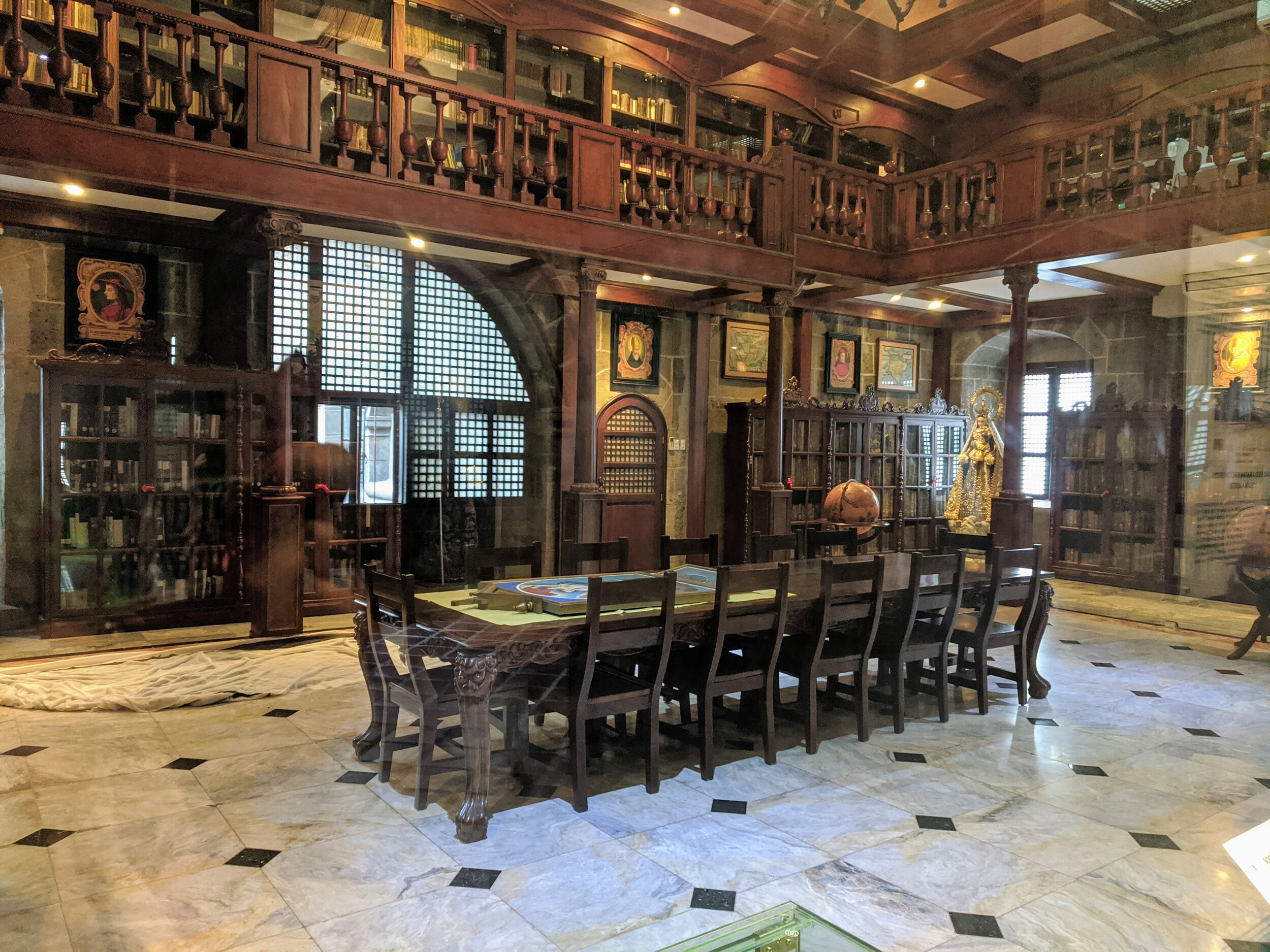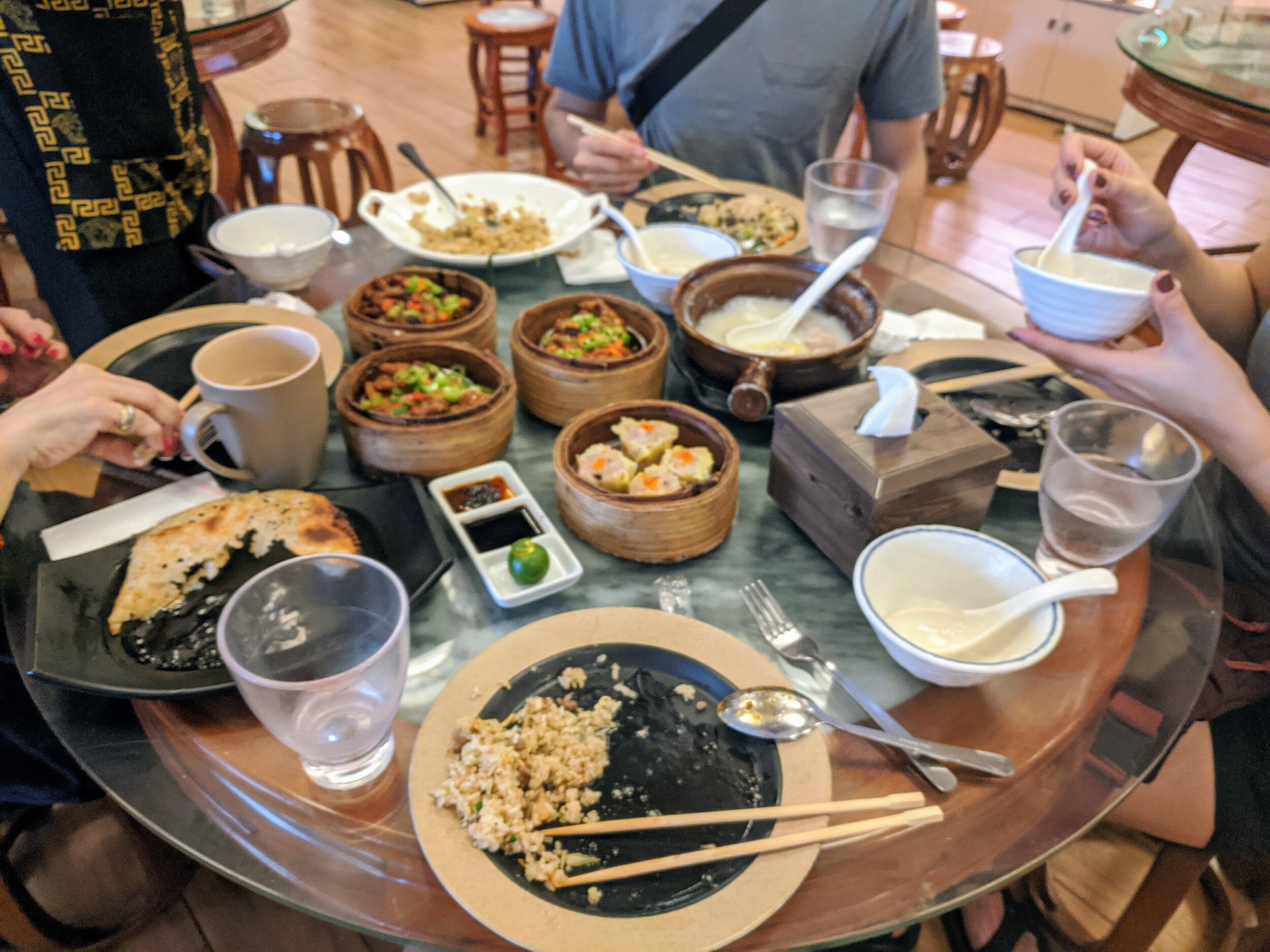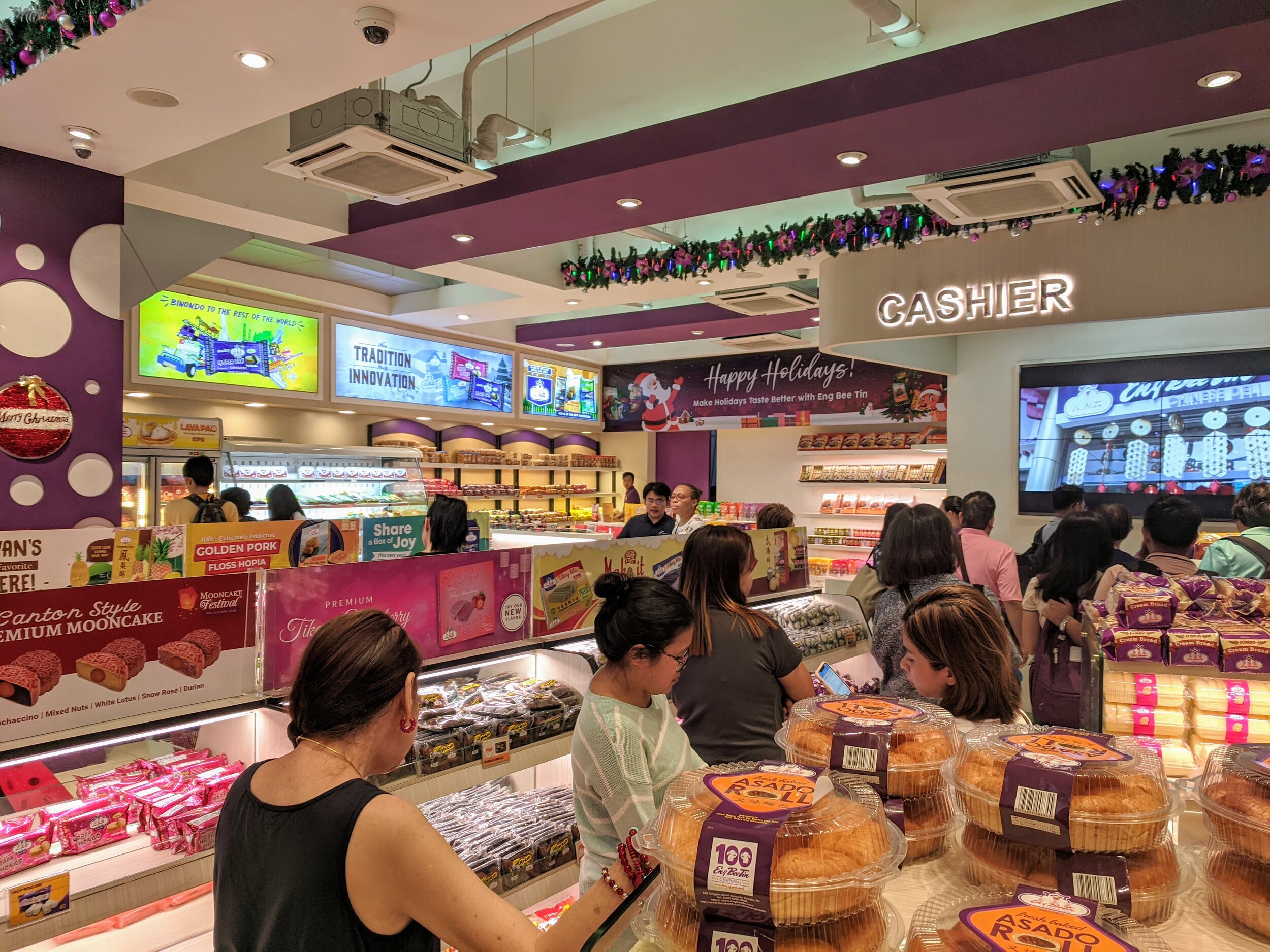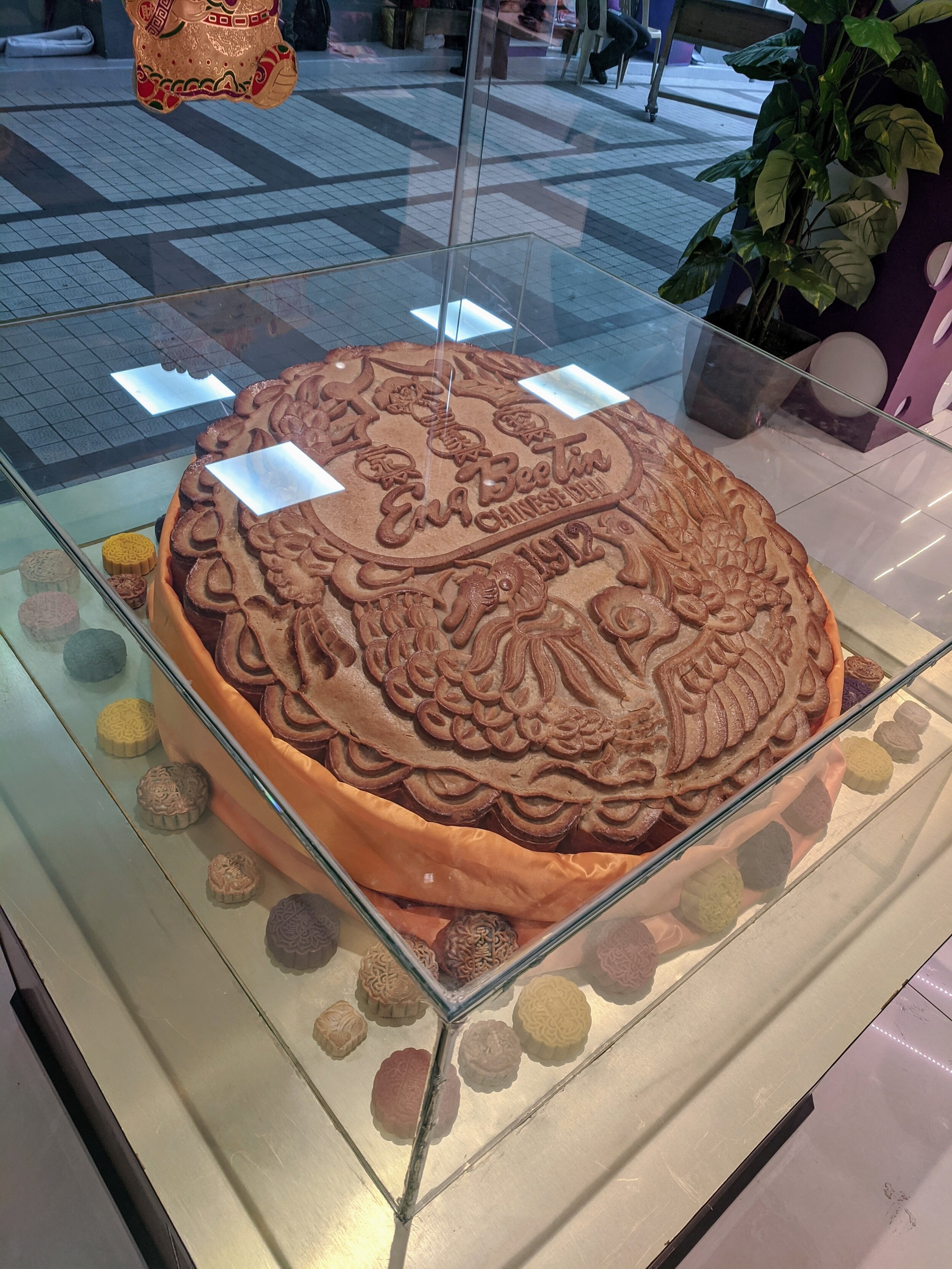The Philippines! Manila and Our Huge Family
San Augustin monastery
My sister found really cheap tickets to Manila in late summer 2019 and we decided that she, her boyfriend, and I would take a trip together over the week of Thanksgiving. My sister had been to visit for a week about three years ago, and the last time I had visited was when I was 16. During that 2005 visit I spent a week in Manila with our family while my grandpa was performing surgeries as part of a medical mission. Because I did not speak Tagalog and I was a really awkward teenage vegan, I really did not understand of what went on during that trip. I was in a place with a lot of people I was supposedly related to but speaking a language I had never heard before. Manila was busier and noisier than anywhere I had ever been before, and because I was vegan at the time I did not try many local foods. Everyone was very relieved to learn I am now omnivorous. I do remember visiting the now-erupted Taal Volcano, and being horrified by baskets of chicken feet at dinner, and open-air markets full of slaughtered animals and gutted fish. As a teenager sheltered in my upper-class suburb, I had never seen such a marked class divide. There were so many people living in poverty — I saw young children dragging buckets of water back to tin shacks on the same street as my family’s compound, and we visited sprawling fancy malls full of designer shops, with shanties propped up against their shiny facades.
This visit felt extremely different. Grandpa was not there to dictate an itinerary, and even though our family was extremely gracious and planned a few day trips and dinners, we declined some of the trips so we could spend more time sightseeing and shopping in Manila. It was also such a joy to just enjoy our family’s company — I was 15 years older, with a lot more international travel experience — so rather than being shocked at all of the sights and sounds I could focus on getting to know our extended network of relatives. Our flight arrived pretty late at night, but our adorable aunt and uncle still came to pick us up from the airport. I recognized them from my visit so long ago, but forgot about our aunt’s energy and generosity, and our uncle’s bone-dry sense of humor. They were hosting our aunt and uncle that were visiting from Winnipeg so we got some hotel rooms in a cute part of Makati. They dropped us off around 10pm, and we made a plan to meet for breakfast the next day.
Intramuros & Binondo
The next morning our aunt met us at a brunch spot near the Powerplant Mall, which is exactly what you might think — a former power plant that has been turned into a shopping mall and gentrified the district around it. We ate our breakfast and mainlined coffee with our aunt and then took a lap around the mall. If you do not know, the Philippines was named for King Philip II of Spain, and were colonized by the Spanish for about 350 years until the late 1800s, when the U.S. began its occupation after attacking Spanish fleets in Manila during the Spanish-American War. This colonial heritage means that a vast majority of Filipinos practice Roman Catholicism and love Christmas. We were lucky to be in the Philippines during the Christmas Season, because Filipinos take Christmas very seriously. Christmas season spans three months from October to December and the decorations in the numerous malls throughout Manila are incredible.
After doing a lap in the mall for SIM cards and snacks, our aunt took us to Intramuros, the walled city near Manila’s port from which Spanish colonizers ran the Philippines for nearly 400 years. The huge stone walls are ringed by huge swaths of lawn, which I imagine used to be a moat — now it’s a public golf course. We walked along the wall from the outside and ran into numerous groups of school-aged kids practicing dances and theatric scenes. Some of them were in uniforms, but some of them seemed like they were practicing dance routines together for fun. The juxtaposition of a monolithic colonial fortress being used as a place for ecstatic artistic expression was incredible. It looked like they were literally dancing on the grave of colonial oppression. Inside the fortress are two Catholic institutions, The Manila Cathedral and the San Augustin Church and monastery. The Manila Cathedral was really huge and impressive… And I think my favorite part was the dog sleeping in the back of church behind a fan.
We spent the most of our time in Intramuros walking around the San Augustin monastery. The building was decorated with huge paintings of friars teaching Filipinos, or being welcomed with open arms, and in some the friars were being beheaded by traditionally-dressed Filipinos. Many of the paintings were completed in the 1980s and were entitled with phrases about the love that the Catholics brought to the Filipinos. It was a disturbingly blatant mischaracterization of the Filipinx colonial experience. Nevertheless, the museum exhibits were incredibly interesting. The monastery had been turned into a really extensive museum cataloguing the extensive study of Philippine plants conducted by the Catholic friars. There is an entire room lined with prints of botanical drawings, and they were fascinating. The friars studied the medicinal properties of the plants of the Philippines alongside native experts, and catalogued them in huge leather-bound books.
Buddha at Eng Bee Tin
After we toured churches for hours it was lunchtime and our aunt took us to Binondo — the oldest Chinatown in the world! As we crossed the Pasig River and saw the Chinatown arch, the city around us got dramatically denser and busier. In Intramuros, the fortress closes at night and it is fairly touristic, so traffic in the low season is limited. In Binondo there were lots of people on the sidewalks, and the streets were like a parking lot. We walked through the neighborhood for a bit and our aunt led us to the Eng Bee Tin Chinese Deli where the Filipinx generosity kicked into overdrive. Filipinos take hospitality extremely seriously, simply uttering thought with a hint of desire would result in our aunt jumping up to provide. It was both endearing and stressful, I was nervous about expressing interest in things for fear that she would go too far out of her way to procure things. For example, our aunt asked if I like chicken feet and I said ‘yes’, so she ordered three baskets! After we jammed all of the shu mai, congee, and chicken feet we could into our tummies our aunt took us downstairs to the bakery. Eng Bee Tin is famous for their hopia — a little cake/biscuit pastry filled with different fruit fillings. She bought us a whole bunch of them and at no point did she mention that we were expected to eat dinner in only a few hours.
The Food Never Stops
We went back to their house to pick up our Canadian relatives and the desserts we were bringing to dinner at our cousin’s Spanish restaurant Cazuela. Filipino hospitality is no joke. It was a really incredible evening with course after course of amazing Spanish food, wine, homemade cassava cake and puddings. I cannot remember the last time I was that full of food. Our aunt was an almost sinister pusher… Every time I thought that there could not possibly be another course she would order or procure something else. It was all so good that it was really hard to resist, even though it was effectively a second dinner since we had eaten only two hours before. We met our uncle who lived to the south of Manila in the Bicol area, and learned about his daughter in Dubai, and all of our cousins across the world — including the hundreds in Winnipeg. Apparently there are some closeby in Vancouver, and I had no idea! We made a funny little family tree since many of the aunts and uncles were there, and it helped me understand my grandpa’s upbringing so much more. Grandpa never told us a lot about his life in the Philippines — whenever we spoke to him he wanted to know about our lives, and to make sure we were working hard in school and getting good grades. It was so amazing to finally feel close to this half of my family that had always felt literally a world away.
The Robles clan!

